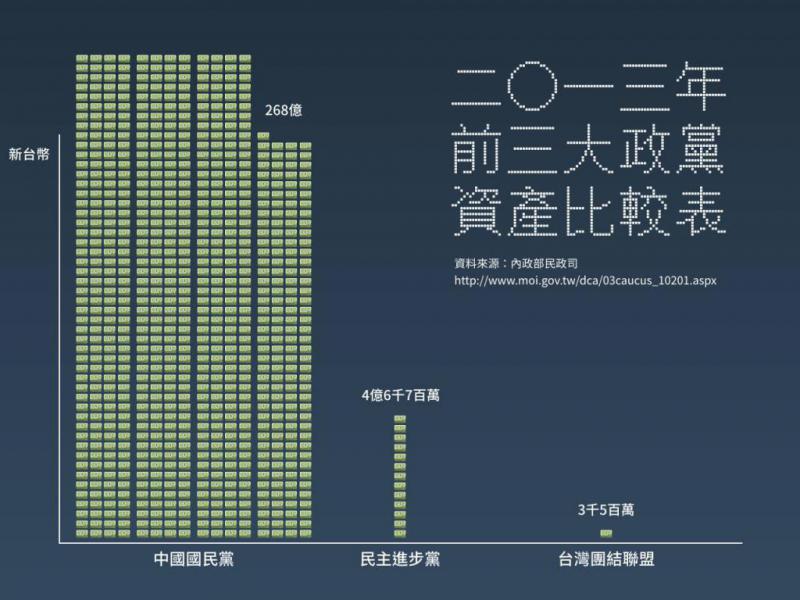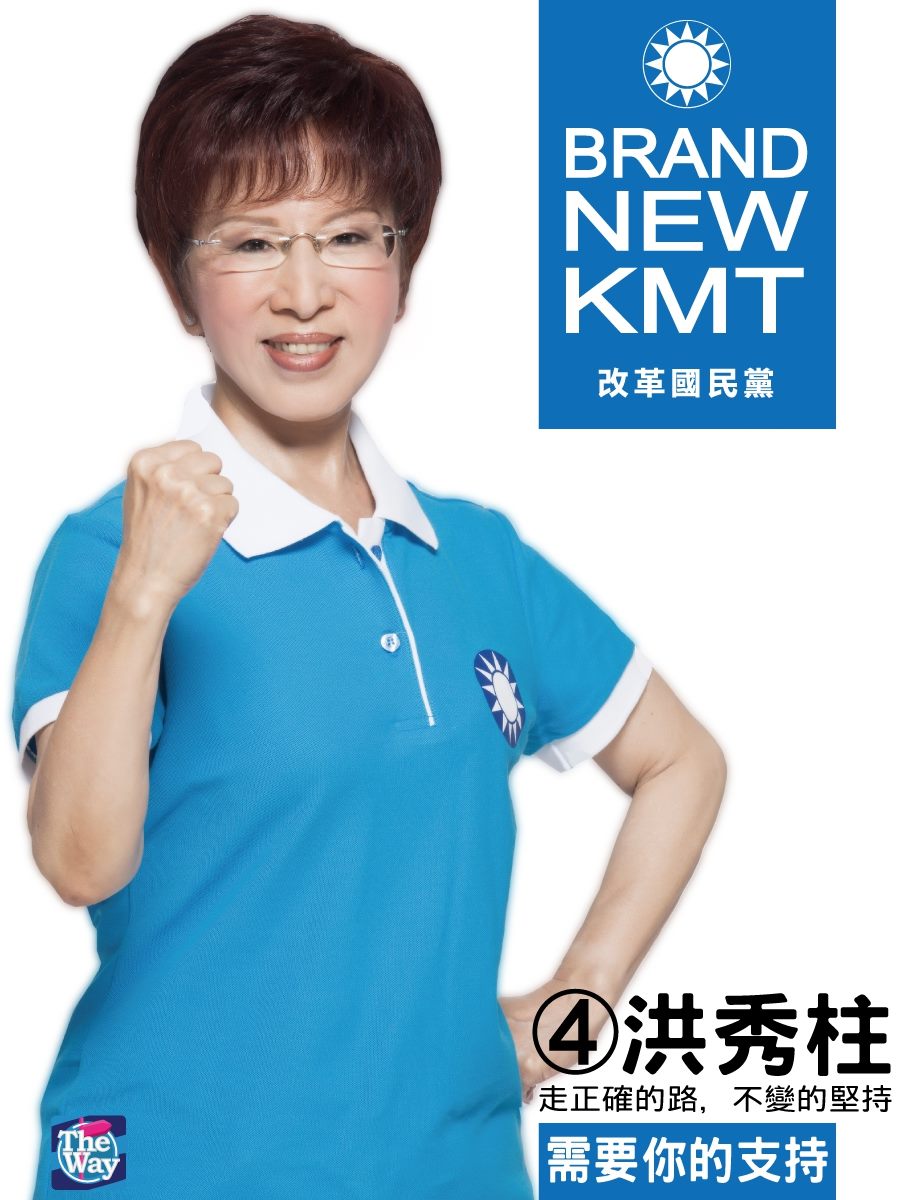by Brian Hioe
語言:
English
Photo Credit: KMT
IS THE KMT running scared on the issue of party assets? A freeze of a KMT-owned Bank SinoPac account was recently ordered by the task force investigating KMT party assets. The freeze took place after a withdrawal of 520 million NTD (16.6 million USD) from the Bank SinoPac account, which was exchanged for ten cashiers checks from the Bank of Taiwan. Investigators responsible for the KMT party assets probe accused the withdrawal of being illegal as it took place after the beginning of the investigation, which stipulated that money should not be moved.
To give some sense of the scale of this withdrawal, in 2014 KMT assets totaled 26.8 billion NTD (855 million USD) and 981.52 million NTD (31.3 million USD) was generated from interest on KMT party assets. Thus, the KMT attempted to withdraw close to half of the yearly interest it would have made on its party assets. Is the enormous size of this attempted withdrawal a sign of the KMT fearing crackdown on its party assets? Currently, the KMT is contesting the freeze, stating that it needs this money to pay its employees. However, if the KMT is in fact unable to pay its employees without access to its funds, this only reflects to what extent the KMT is dependent upon illegally gained assets and not legal income to fund its daily operations.
 Data visualization of KMT party assets in 2014. Photo credit: KMT.exposed
Data visualization of KMT party assets in 2014. Photo credit: KMT.exposed
The KMT registered 18.96 billion NTD (605 million USD) in party assets last year. The total amount of KMT party assets remains unknown and estimated amounts fluctuate wildly, even in claims by KMT politicians themselves. The KMT’s party assets were estimated to be between 200 billion NTD (6.4 billion USD) and 500 billion NTD (16 billion USD) in the early 2000s and there were even larger claims by Wealth Magazine (財訊月刊) in 2000 that KMT assets could be as high as 600 billion NTD (19.1 billion USD) and further reports that KMT assets could be over 900 billion NTD (28.7 billion USD).
There were, in fact, past accusations within the KMT against Ma Ying-Jeou that he embezzled the missing 170 billion NTD which disappeared if KMT assets shrunk from 200 billion NTD in the early 2000s to 26.8 billion NTD by 2014. Accusations of Ma embezzling have been longstanding and may reflect internal party conflict more than actual corruption on the part of Ma. But the KMT itself claims to have had 62.8 billion NTD in 2000, which declined to 23 billion NTD in 2006 as a result of losses, and it seems conceivable that party assets could have further declined to 18.96 billion NTD (605 million USD). Many have suggested the unfolding Mega Bank scandal has links to KMT party assets, leading to speculation that perhaps there is a connection to fluctuating reported KMT assets. It remains a mystery as to what might have led to such a decline in KMT party assets apart from investment losses, as the KMT claims.
Either way, the KMT is likely one of the richest political parties in the world. This claim, which is frequently raised in Taiwan, is hard to establish except through negative evidence, considering the difficulty of comparing assets of every single political party in the world side-by-side in order to determine which party has the most assets.
To provide a comparison, political parties in the United States do not retain party assets in their own right but raise money based on presidential campaigns. Campaign spending in the United States approached one billion USD for both Democratic and Republican candidates in both political parties in 2008 elections. However, the total cash on hand retained by both parties was 17 million USD for the Democratic Party and 31 million USD for the Republican party. The 2008 elections had the largest campaign spending of any presidential campaign in American history.
 KMT chairperson Hung Hsiu-Chu. Photo credit: Hung Hsiu-Chu
KMT chairperson Hung Hsiu-Chu. Photo credit: Hung Hsiu-Chu
Being a much smaller country in population and size of its economy compared to the US, campaign spending in Taiwan is not as high, with the Tsai campaign spending 637.8 million NTD (20.3 million USD) in 2016 elections and the Chu campaign spending 212.57 million NTD (6.8 million USD). However,the DPP retains approximately 4 billion NTD in assets in 2014 (128 million USD), reflecting that political parties in Taiwan retain larger party assets than in the US. Nevertheless, even with reduced assets and being outspent during 2016 elections, the KMT has something like 8 or 9 times the finances of its closest competitor, the DPP. In 2014, the KMT could have fielded an entire presidential campaign in the US on its own, despite the US being a country with around fourteen times the population of Taiwan. Though the number sounds hyperbolic, if the KMT did, in fact, have 900 billion NTD in assets in the early 2000s, it had enough to sponsor 28 US presidential runs assuming a cost of one billion USD per run.
Why would the KMT need so much money and what does it currently spend this money on? Again, given the smaller size of the population in Taiwan, not much money is required for the KMT to fund legislative or presidential runs compared to the size of its assets. How the KMT uses its enormous resources is something which needs to be clarified through the current probe into KMT party assets. If KMT party assets have seen a dramatic drop in recent years, how that money was disposed of also needs to be clarified.

